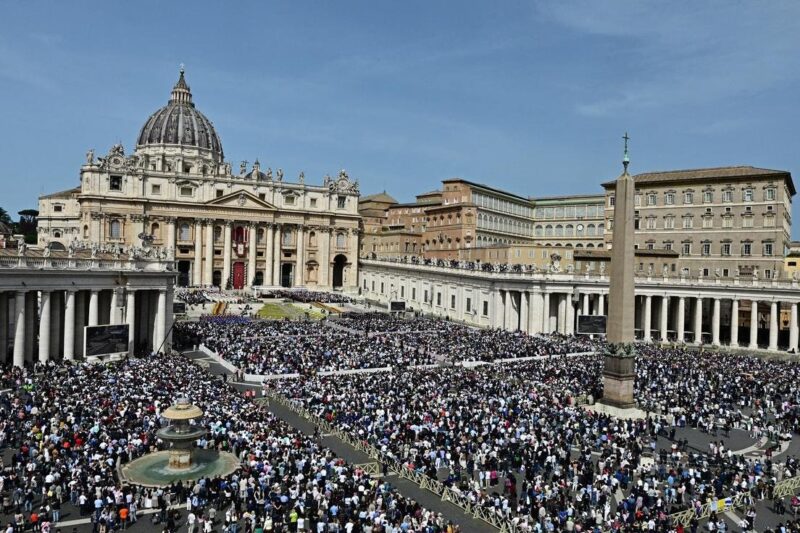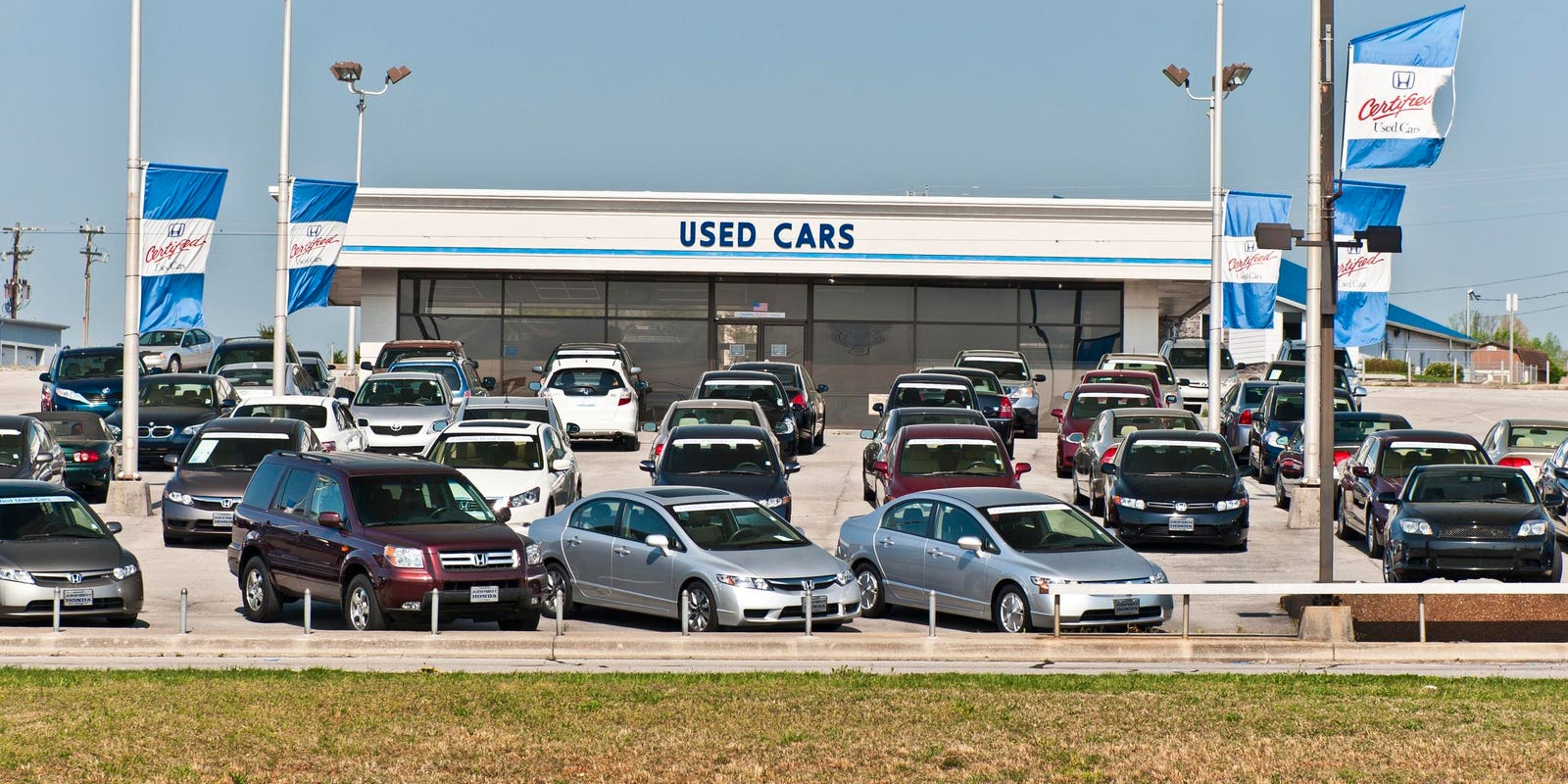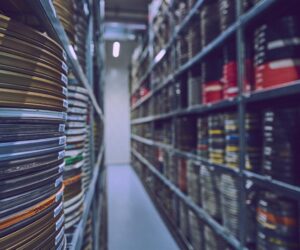A general view shows the crowd during the Easter Mass as part of the Holy Week celebrations, at St Peter’s square in the Vatican on April 20, 2025. (Photo by Tiziana FABI / AFP) (Photo by TIZIANA FABI/AFP via Getty Images)
AFP via Getty Images
The Catholic Church has a long history of supporting environmental stewardship. This tradition got a recent boost. The late Pope Francis’ goal of powering the Vatican by 100% solar energy is happening now as Vatican City becomes the first fully powered solar state. This is pretty interesting as the Vatican joints a growing list of countries using 100% renewable energy.
Perhaps even more intriguing is the way the Vatican did it – they used agrivoltaics. Agrivoltaics is the combination of agriculture with solar photovoltaic technology (which converts sunlight directly into electricity) on the same land. Farmers use agrivoltaics because it increases their crop yields. This is not entirely intuitive to most people, but agrivoltaic yield increases exist because there is a microclimate created underneath the solar panels that conserves water for the plants and helps protect them from excess sun (along with extreme winds, hail and soil erosion). The temperatures under agrivoltaics are cooler, milder and all around more pleasant for many types of crops. Last year, for example Canadian experiment showed farmers could increase strawberry yield by 18 % under solar panels compared to strawberries in an open field. This agrivoltaic crop yield bump has been shown for dozens of other crops and solar panel combinations all over the world, including basil, broccoli, celery, corn, grapes, kale, lettuce, pasture grass, potatoes, tomatoes and more. Some are small bumps (e.g., 3% for wheat in Germany) and some are large (>100% for hot peppers in the south west U.S.). No surprise the practice of agrivoltaic farming is booming in the U.S. Asia and even in cold and cloudy Canada.
Agrivoltaic power plant
Getty Images
The Path To 100% Solar At The Vatican
It all started in 2015 Pope Francis wrote in a letter named Laudato Si (on the care for our common home) where he pointed out : “A very solid scientific consensus indicates that we are presently witnessing a disturbing warming of the climatic system”.
Pope Francis For World Youth Day, 2023 in Cascais, Portugal.
Getty Images
Since then, the scientific consensus, the massive body of scientific evidence and urgency from climate scientists to reduce carbon emissions has only become more pronounced. More recently, Pope Francis’ Apostolic Letter “FRATELLO SOLE” (or “Brother Sun”)
“… President of the Governorate of Vatican City State and President of the Administration of the Patrimony of the Apostolic See, the task of constructing an agrivoltaic plant located within the extraterritorial zone of Santa Maria di Galeria that will guarantee, not only the power supply of the radio station there, but also the complete energy sustenance of Vatican City State.”
Yes, Vatican City is a sovereign state — a full country. Although it should be pointed out it is the smallest in the world at just over 100 acres.
Pope Francis’ goal was to be a model of how to make a transition to a sustainable development that reduces greenhouse gas emissions to achieve climate neutrality. Vatican City under the new Pope Leo has now done that, but it started slightly smaller.
To make this model work the Vatican first installed the photovoltaic roof in the Courtyard of the Corazze entrance. They used partially transparent solar panels made up of spaced silicon solar cells that has an interesting visual effect. It turns out these same type of solar module are some of the best for growing crops in partial shade. For example, lettuce really likes this spotted shading more than uniform shading as do strawberries in partially shaded greenhouses.
The Vatican’s Agrivoltaic Solar Farm Is The First But Probably Not The Last
The Vatican’s agrivoltaic farm is located on the Holy See’s property at Santa Maria di Galeria on the outskirts of Rome. This farm is much larger than Vatican City itself as it has over 1000 acres. It holds the Vatican’s Radio transmission facilities for digital broadcasting.
Before the Vatican 7 counties ran off of 100% renewable energy: Albania, Bhutan, Nepal, Paraguay, Iceland, Ethiopia, and the Democratic Republic of the Congo. Now we have an 8th country running completely off of solar agrivoltaics.
Who will be next?
Almost all countries have more than enough farmland to run their grids completely from solar agrivoltaics. For example, Canada could use less than 1% of its farmlands and eliminate fossil fuels entirely from the grid. For many countries, the economics heavily favor agrivoltaics as you get money from both increased crops and solar is the cheapest source of electricity in history according to the IEA. The real challenge to be a completely solar powered state is that most countries already have some renewable energy from another source. For these countries solar can make up the rest of the electrical needs (and heating/cooling needs with heat pumps and transportation needs with EVs) so they can join the 8 sustainable electric country list.
Local Solar
Obviously solar power can come from more than just farms. Religious organizations, like the Catholic Church that back environmental stewardship can use solar installations as a way both to protect the environment and save money. The Catholic Maasin diocese in the Philippines was the first in the world to install solar on all of its 42 parish churches. Many Catholic Churches in the U.S. and many other church organizations around the world are using solar. There are groups such as Catholic Energies that provides expertise to design, implement, and finance solar energy projects that reduce energy costs, enabling other Catholic organizations to use those savings in support of their critical ministries (e.g., charities). Similarly Interfaith Power & Light is an organization has been mobilizing a religious response to global warming for 25 years.
Our Lady of Lebanon statue with solar photovoltaics, Harissa, Lebanon. (Photo by: Philippe Lissac/Godong/Universal Images Group via Getty Images)
Godong/Universal Images Group via Getty Images
It should be pointed out that churches in the U.S. do not pay taxes and thus are not eligible to receive the 30% renewable energy tax benefits (which expire at the end of the year). However, if you are in a rush and want to take advantage of the tax benefit, third parties that can benefit from the credits and have helped churches in the past go to solar. The way it works is the investors buy and install solar panels on a church, and the congregation can use power from the investor. The congregation technically does not own the solar panels the way the Vatican does, but they still get to reap some of the economic benefits. Although the elimination of the tax benefits for solar in the U.S. maybe political the truth is the economics of solar are now solid enough to normally out-compete the relatively higher cost of grid power.
Whether you are a Catholic or not solar is a great investment right now in most of the world. Even if you are not a church you should be heavily considering powering your home or business with solar just as a matter of economic responsibility.
Solar energy and sustainable lifestyle.
getty









